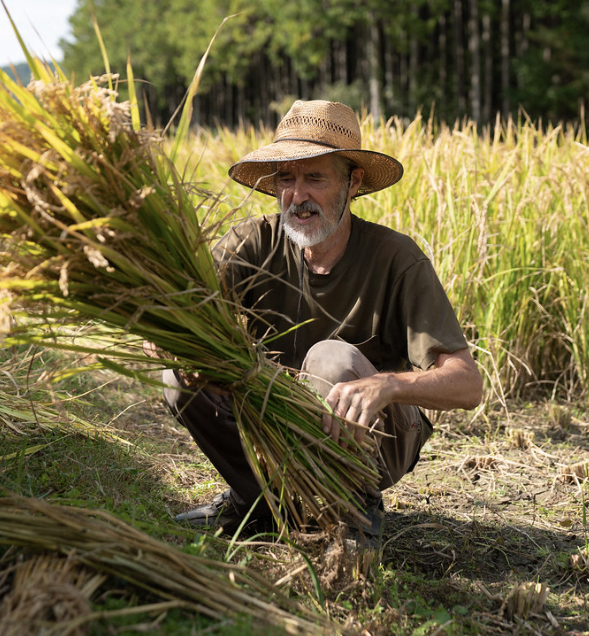Notes from Himeji, Hyogo: I am a Passenger
by Simon Rowe
What do commuters think about on their long rides to and from the mills each day? I bet they don’t think about how lucky they are that the wheel was invented.
I was a commuter once—a nameless man in a salt-stained suit and headphones. A Business English instructor, a corporate gun-for-hire with a bandolier of ballpoints, a ronin who could commit hara-kiri with the edge of a Let’s Talk2 cd. But didn’t. Because it was never about the destination—the depressing chemical plants, semiconductor factories and sinister steel mills waiting for me at the end of the line—it was about the journey.
The Kakogawa line train is the quintessential ‘paddy lands express.’ Four years of rattle and roll through the greenest rice fields this side of the Japan Alps, from the Seto seaboard to the lush hinterlands of Hyogo, a place where frog eats fly and snake eats frog and snake gets beaten to a pulp by village boy. The journey (like the boy) neutralised the destination.
The Kakogawa-sen follows a great, slow-moving torrent called the Kako River. If you’ve ever seen Ford Coppola’s “Apocalypse Now” or read Conrad’s “Heart of Darkness”, for four years that guy in the story (Willard in the movie, Marlow in the book), that was me. I wish I could say I found someone as interesting as Kurtz, but alas, there was no badass at the end of the line.
The two-car conductorless train still departs Kakogawa station at 20-minute intervals, bound for upcountry with students, workers, Guinness Book grandmas and sometimes a foreigner or two. Young women still sleep on the shoulders of strangers and college girls still doze and nod their heads like glam-rock groupies as the train bounces down the rails. Some days the entire car looks like it has been gassed; passengers everywhere, draped on each other, slouching, snoring. I stepped over a fat boy asleep on his back on the aisle floor once.
My destination was Yashiro-cho, a place where trains pass hourly and the station attendant is a large, fat ginger cat which eyes passengers suspiciously as they pass through the turnstile.
In summer, midge flies, moths and nymphs cloud the platform. Fuzzy caterpillars crawl over the bench seats and spiders abseil from the rafters. In winter they disappear and the soft, silent misery of falling snowflakes fills the hour-long wait for the night train back to modern-day Japan.
I don’t miss the long commutes. But I do miss the man who was always waiting for me at the end of the line. A taxi driver named Yamamoto. His shiny black Nissan Cedric always got me to the mill on time. Love him or loathe him, I still can’t decide; he was both the endearing face of small town Japan and the Mister McGoo of privatised transportation.
He drove at a speed I could have bettered running on my knees. He clocked 39 km/hr once on a paddy by-pass. He would veer and drift all over the road, squinting over the wheel as he squeezed out his best radio-learned English. He once answered the dispatcher in English: “Oooh yes? How are you today? I am very fine, veeeeeery fine thank, and you? Hahaha-ha!” Every conversation with him ended the same way: “Many thankyous Mister Simon, for the free English lesson.”
Simon Rowe writes short fiction and screenplays from a small room in an old house behind Himeji Castle. This vignette is one of 45 linked ‘letters home to Grandma’ – a project he is working on called Seaweed Salad Days.







Recent Comments